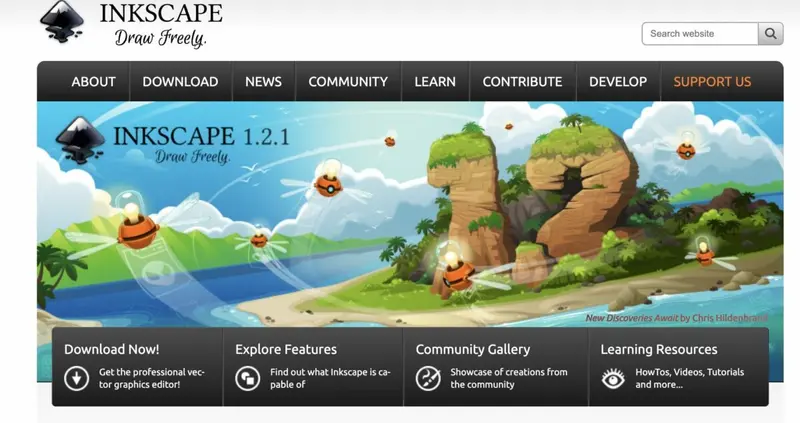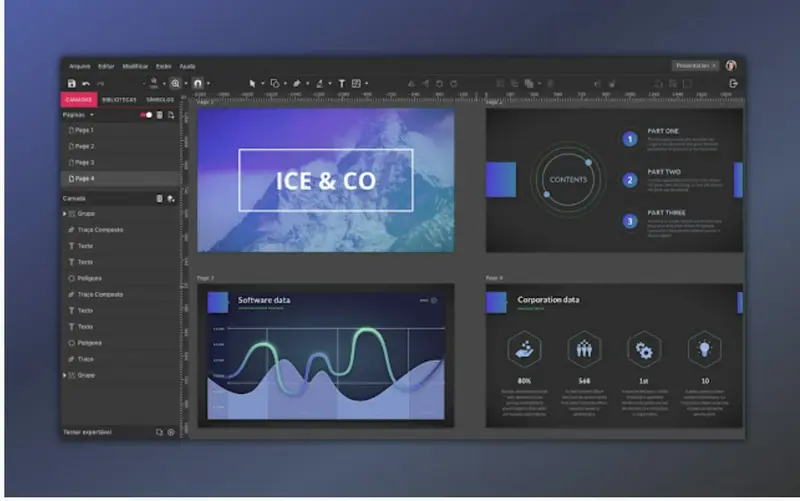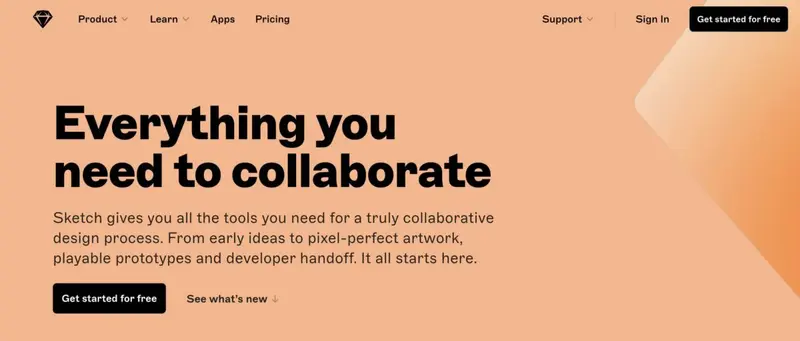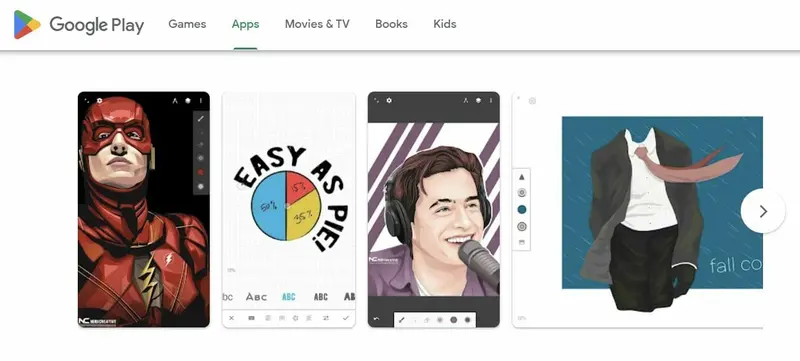It's almost a crime nowadays not to maximize the tools available for professionals, and for graphic design, there are a lot. Graphic design software is like a Swiss Army Knife for creative professionals. Using these tools can create a wider latitude for creators, whether at the enterprise level or a starting freelancer. Design tools keep deliverables for clients more efficient. Because the ever-evolving design industry requires thoughtful processes, graphic design software tools reach outcomes by making designs easier to render.
With the growing demand for graphic design, those who want to make their mark in the field can use tools to facilitate high-quality work while being in total control over every aspect—from layout down to fonts used in a project. Another key advantage of using design software is it gives a wider path for individuals who want to dabble in content creation and branding. The industry is no longer limited to those who are experts in Adobe Illustrator or Photoshop; even non-designers can start building their visual content.
Do Graphic Design Software Tools Cost A Lot?
One of the driving or hindering factors to using tools is the cost. Whether you opt for a one-time fee or a monthly recurring payment plan, you have to determine how much you are willing to pay for a particular software. Or better yet, ask yourself, "Is this going to earn me money in the long run?"
These tools can make your design process much faster, have higher quality, and actually cater to specific requirements (e.g., 3D) your project needs. There are also free open source options that can provide some features for those who aren't ready to commit to paid, full-feature software just yet.
Best Free and Paid Graphic Design Software Tools in 2025
Here are our top picks for graphic design software. Our staff considered features, compatibility, usability, and value for money when evaluating the tool. Here’s a rundown on each one:
Adobe Photoshop is arguably the first graphic design tool to dominate the industry, with the comprehensive features and layouts needed for all types of graphics and logo design projects. The software is still one of the best overall tools for designers. Today’s Photoshop can be synchronized with Adobe Creative Cloud and offers an array of unique features, like Face-Aware Liquify, the Design Space View, Artboards, and touch plus stylus support, to name a few. Adobe Photoshop is also continuously updated for custom use. For example, there are layout options, plus Graphic and Web, Motion, 3D, Painting, and Photography in the interface, depending on which ones the user will use often. Affinity Designer is a great alternative to Adobe Illustrator, as it has the same features while being more affordable. The software has pixel art and vector options, so you won’t have to open a separate app when creating these art environments. Affinity Designer has a grid system that lets you create grids while creating icons and other graphic design work. It’s useful when measuring accurate layouts, angles, gutters, and spacing. There’s also the snap feature to lock and position different elements in the design. GIMP (GNU Image Manipulation Program) is one of the best free software for designers, as it provides professional-quality functions that you’re paying for in other tools. GIMP can be used to create free-form designs from scratch, or edit and fine-tune existing artworks. Aside from it being free, GIMP is the choice for many because of its customizable user interface. The GIMP community, and any user with coding experience, can add plugins that will add more features to the tool. It is interoperable with Windows, macOS, Linux, Solaris, and BDS. Canva is a very user-friendly design software with free and paid options. It presents a convenient user interface that can crop and resize images and add filters, frames, texts, and effects. Canva can be used on desktop and mobile, and there are no restrictions (e.g., watermarking) on editing photos and infographics when you use the free version. Canva’s paid version has a Pro Brand Kit, which helps brands stay consistent in all of their designs. The Kit allows pre-setting of fonts, logos, colors, and templates to keep in the theme of the brand. There’s also a real-time editing feature that can make collaborations easier using any device. This software is not as powerful as, say, Adobe Photoshop, but it is perfect for those who do not have professional experience using design software. Inkscape is another free, open-source graphic design software used to create professional-grade vector images. Inkscape can be used for artistic and technical designs, such as clip art, logos, cartoon graphics, typography, and diagrams. With Inkscape, there’s an option to edit the open-source code and add upgrades to the tool. Designers who can code can enhance the software easily. Inkscape has a large active following of designers/coders who provide regular updates and exciting new features. There is a wide array of editing and designing instruments, and it has a clean, convenient user interface. The tool runs on Windows, mac OS, and Linux. Those who are familiar with Adobe can manage this software easily. Gravit Designer is an HTML-based software that lets creatives design and deliver quality vector graphics. It is a popular tool for rendering graphics, products, or web designs. Gravit Designer’s key advantage is the dashboard. It’s effortless to navigate and allows easy switching between tabs you are working on. Users can also set the canvas width and height through the dashboard. There are also different options available for easily designing social media posts. Gravit Designer contains a good selection of tools—lasso tool, pen tool, and Bezigon tool, to name a few. The software allows adding multiple fills to an element for enhanced designs. It’s usable for Windows, Mac, Linux, and Chrome OS users. Vectr is a free, high-quality graphic design program that allows you to create stunning vector art and designs and edit images for use on the web and in print publications. This is another free graphic design software, but it is only available for online use. They do have a Chrome plugin option for more accessible browser use. Vectr presents a simple user interface, perfect for beginner designers who want something easy to navigate. The software has drawing and design tools that are intuitive and comprehensive but not intimidating. There is an array of on-trend fonts, graphics, effects, and shapes for all types of vector artwork. Vectr also allows real-time sharing that all team members can access. Sketch is a graphic design tool that suits app, web, and interface design projects. Only catering to Mac users, the software lets creatives render and complete interactive prototypes for UX/UI purposes. It is a paid platform, but it’s very affordable at just $9 per month, significantly lower than other tools. Sketch has crucial features for design, including snap to grid, snap to pixel, and other responsive design capabilities to test multiple screen sizes and resolutions. Designers have a lot of options from its library of artboard templates built for web and mobile devices. Sketch also allows custom plugins, as it has active community support for continuous software enhancement. Infinite Design is a mobile app design tool only available on Android. The tool has an easy pen tool that designers can use to freehand graphics and create custom work directly on the mobile device. It essentially turns your phone into a professional drawing tablet, where you can create or export files into JPEG, PNG, or SVG. Infinite Design provides designers and beginners a nifty experimentation tool for concepts and creating vector images. Infinite Design has several awesome features, including the transform tool for scaling, distorting, and translating images or graphics. It also features snapping and grid features, both useful when managing the editing process. Vectorize turns any image into editable vector files, and the rotate and flip feature can apply not only to an image but to the entire canvas.1. Adobe Photoshop
Pros
Cons
2. Affinity Designer
Pros
Cons
3. GIMP
Pros
Cons
4. Canva
Pros
Cons
5. Inkscape
Pros
Cons
6. Gravit Designer
Pros
Cons
7. Vectr
Pros
Cons
8. Sketch
Pros
Cons
9. Infinite Design
Pros
Cons
Conclusion
These are among the best free and paid graphic design software tools you can use right now. Depending on your budget, the features you need for your work, and the collaboration process, there is a wide range of options catering to basic and intricate large-scale projects. If you have frequent team collaboration, a tool incorporating cloud access is the logical choice. Meanwhile, lone freelancers could stick to open source tools for creating graphic design outputs. Those highly proficient in graphic design want powerful software with the most efficient and creative features, even though it may be harder to use for beginners. Thinking about what works for you will guide your selection process. The best part is—there are both free and premium options you can consider.












